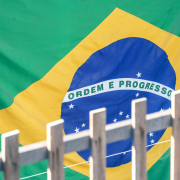Beneficial rains have returned to Paraguay and Soybean farmers in Paraguay are now more optimistic concerning their 2019/20 soybean production. The summer rains started later than normal last September and October, which delayed the soybean planting. Some of the early planted soybeans had to be replanted due to poor plant populations. In fact, farmers in Paraguay were concerned that 2019/20 would be a challenging year just like 2018/19, but those concerns have now gone away.
Starting in late October, the rains became more frequent and they have continued to benefit the developing soybean crop. Most of the soybeans are now filling pods and the weather has continued to be beneficial. In the better regions of eastern Paraguay, farmers are expecting soybean yields in the range of 65-70 sacks per hectare (57-62 bu/ac).
During the 2018/19 growing season, not only did dry weather negatively impact the soybean yields in Paraguay, farmers also received low prices for their soybeans. Farmers closely watch the Chicago Board of Trade for price direction since most of the buying and selling of soybeans in Paraguay are conducted in dollars. Soybean prices declined on the Chicago Board of Trade in 2019 due to the trade dispute between the U.S. and China just as farmers in Paraguay were selling the soybeans. As a result, they had to sell more soybeans to compensate for the lower price.
The soybean production in eastern Paraguay is very similar to that of western Parana in Brazil. The soils, the climate, and the production practices are nearly identical. In fact, many soybean farmers in Paraguay are Brazilians that moved from southern Brazil to Paraguay decades ago in search of cheaper land.
One result of the delayed soybean planting in Paraguay has been the proliferation of weeds due to the lag time between burndown of the weeds and the planting of the soybeans. The delayed canopy closure of the soybeans also allowed more sunlight and moisture for the weeds. Weed control in Paraguay costs approximately US$ 40-50 per hectare (approximately $16.20 to $20.25 per acre) and that does not include the added cost of controlling glyphosate resistant weeks such as horseweed, which is sometimes called mare’s tail.
Source: Agropages

